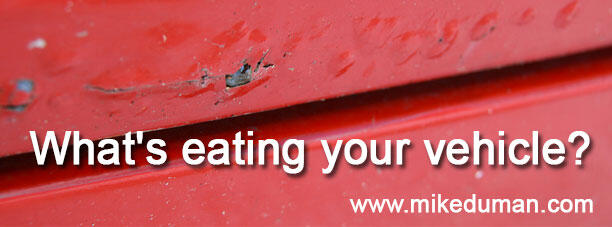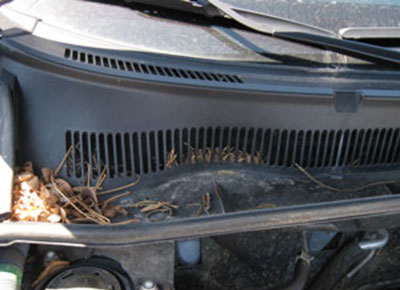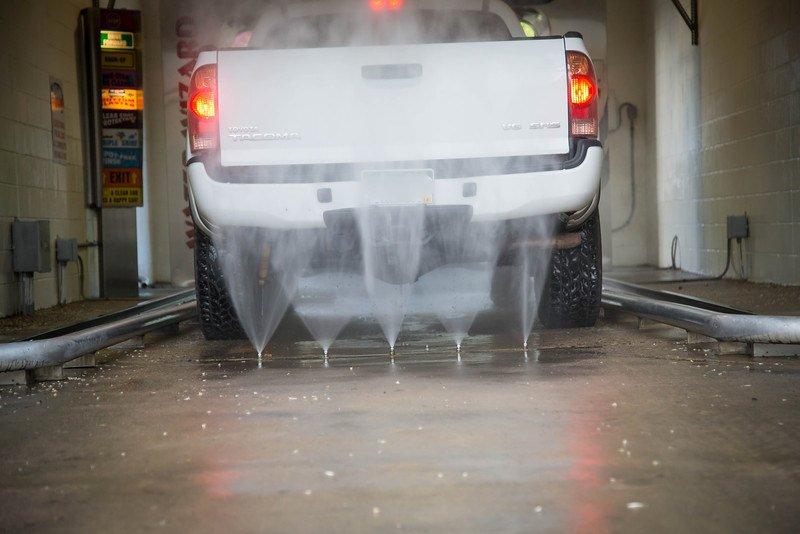
Our vehicles are constantly exposed to the elements. The detrimental effects may vary, but probably the number one result from exposure is RUST.
Preventing rust is practically impossible. Even vehicles with aluminum or fiberglass bodies have iron and steel components, and rust likes to eat away at exposed iron and steel.
“Rust is the layman's term for the electrochemical breakdown of iron-based metals called oxidation. In this process, surface molecules react with oxygen in the air and produce a new molecule, Fe2O3, otherwise known as iron oxide. Iron and most steel will completely reduce to iron oxide and constituent elements given enough time” - Popular Mechanics. Older automobiles suffer from significant rust issues far worse than modern vehicles, but that doesn't mean that your new car is immune. The quality of the prep work before your car left the factory can be a key factor in rust prevention, but with time, all vehicles will experience rust, and that rust should be addressed when you notice it, or it will only get worse.
Let's start with your vehicle's body. Hopefully, the paint job is in good to great condition. The painted surfaces of your vehicle take a serious beating from the elements, but that isn't the only thing attacking your paint job. Things like those deep, inexplicable scratches, door dings, or inferior paint prep at the factory are just a few of the things aside from Mother Nature that can result in your vehicle beginning to rust.
It helps to visually inspect your vehicle surface periodically for impending signs of rust. Look for flaws (peeling and flaking) in your clear coat, bubbles forming under the paint, and deep scratches. All of these are indications of a rust issue soon to be coming your way.
 Open your hood and trunk and inspect the areas. Keep these areas free of leaf and other debris. These can store moisture and moisture is a key component of activating rust. Most cars may have these areas painted, but that surface was likely not clear coated by the factory to give you additional protection.
Open your hood and trunk and inspect the areas. Keep these areas free of leaf and other debris. These can store moisture and moisture is a key component of activating rust. Most cars may have these areas painted, but that surface was likely not clear coated by the factory to give you additional protection.
Lift up the mat in your trunk area. If it feels wet or damp, then the likely culprit is a failing rubber seal. Ignoring a wet or damp trunk area will inevitably lead to rust.
Excessive moisture in your vehicle's engine compartment can lead to corrosion transferring to your engine and some of its components. Components of your engine that are showing signs of surface rust can be chemically addressed. Once they are cleaned there are many variants of high temp paints you can apply that can slow those issues from returning. Any of these can be found at your local auto parts store.
 Your vehicle's undercarriage and suspension components are exposed to some of the harshest conditions. Rainy roads, road salts, standing water, etc. constantly attack these often unseen areas. One of the best prevention measures here is a good undercoat, but saying that, there are still going to be exposed iron and steel components. If you live in a coastal environment or a cold area of the country where salt and sand are frequently used on highways and roads during the winter months, then a good preventative measure is trips through an automated car wash that hits the vehicle's undercarriage. A fresh water wash goes a long way towards removing the salts that will adhere to your vehicle's components. A hand-held pressure washer wand will do as well if you don't have access to an automated car wash.
Your vehicle's undercarriage and suspension components are exposed to some of the harshest conditions. Rainy roads, road salts, standing water, etc. constantly attack these often unseen areas. One of the best prevention measures here is a good undercoat, but saying that, there are still going to be exposed iron and steel components. If you live in a coastal environment or a cold area of the country where salt and sand are frequently used on highways and roads during the winter months, then a good preventative measure is trips through an automated car wash that hits the vehicle's undercarriage. A fresh water wash goes a long way towards removing the salts that will adhere to your vehicle's components. A hand-held pressure washer wand will do as well if you don't have access to an automated car wash.
Your local auto parts store will also have a variety of rust protectants designed for undercarriage, brake and suspension components. Most are easy to apply, and you should not consider this a wasted effort.
There are also chemicals available termed "rust converters" that directly act on rusted surfaces converting the iron oxide into a more stable compound. These are more expensive but do a great job if you are diligent on your prep-work. If you opt for this route, then you should follow the manufacturer's instructions to the letter.
The best way to address body rust is to replace the panels or have the rust cut out and new metal welded in. This is typically beyond the skill level of the average DIY'er, but professional body shops do this every day.
No matter what route you choose to eradicate rust you should take a proactive approach as it will continue to get more aggressive in its attack. If you are handy with tools, your local auto parts store will have an assortment of tools and "kits' to help you on your rust removal quest. Remember, any paint removal must be addressed and be aware that simply clearing a body panel of rust and then coating it with a primer is only a temporary fix. The primer is not designed to be exposed to the elements, and while it may act as a sealer to the components below it, the primer surface will quickly deteriorate.
What it all comes to is a simple fact. It is easier to prevent rust than to eradicate rust.
